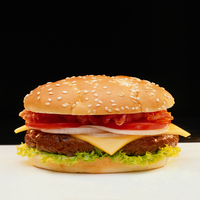Mindless Eating
One of the keys to any successful weight management strategy is awareness:
- Awareness of our bodies
- Awareness of our bodies’ needs
- Awareness of what we are doing physically
- Awareness of what we are eating
- Awareness of the impact of food on our bodies and our minds
- Awareness of the content and consequences of our diets
- Awareness of our eating on other people
- Awareness of our food choices on animals and our physical and emotional environment
- Awareness of the things that drive us to eat even if we are not hungry
- Awareness of the spiritual consequences of eating
I have looked at hundreds of books on diet, health and nutrition and it constantly astonishes me that hardly any of them address this central component, not just of weight management, but of life management. There is some fine exceptions: one is a new book by Brian Wansink called Mindless Eating, that does a good job of discussing some of these problems of awareness about eating.
The author is a practicing researcher and Professor at Cornell, and he has an interesting paper in the current issue of the Journal of Marketing Research. Part of his thesis is that “low fat” nutrition labels may lead to the over-consumption of nutrient-poor and calorie-rich snack foods.
I was pleased to see the experimental data, which exactly confirms my observations. After nearly thirty years of working with people with weight challenges, one of the more common problems is that some people have been brain washed into thinking that if it says “low fat” on the label, you can eat as much as you want. The trouble is that if you know how to read labels, some of the low fat foods are also low health foods. The authors of the paper make some good suggestions for changing policy to help rectify the situation.
When it comes to what we eat, part of the problem is that most of us are so comfortable with the status quo that we rarely notice much that is going on inside or around us.
A fish only becomes aware that it lives in water once it’s dragged up on shore!
And we only realize our own potential for growth and change when we become aware of the dynamic, interconnected beauty and complexity of a world that lies just beyond the reach of our senses.
Growing our awareness of food, nutrition and eating can be a transformative experience. I have known some spiritual teachers who would not accept heavy people as students, saying that if they could not even control their weight, then how could they control their minds or any energies that might be released from meditation, qigong, yoga and the like?
Although I understand what they are saying, I respectfully disagree. As I have discussed many times, there are physical as well as psychological, social, subtle and spiritual reasons for having trouble with weight, and I don’t think that these are grounds for excluding people from learning these practices.
For today I urge you to spend a few minutes working on your own “Ten Awarenesses” about food and nutrition.
It could be the best thing that you do for yourself all year.
“Neither the body with its senses nor the mind with its thoughts is the ultimate being that I am. The body acts and the mind moves, but behind them is the thought-free Awareness, the Knowing Principle.”
–Paul Brunton (English Spiritual Teacher and Author, 1898-1981)
“The voyage of discovery lies not in finding new landscapes, but in having new eyes.”
–Marcel Proust (French Novelist, 1871-1922)
Do Healthy Foods Taste Bad?

There is a valuable study in the Journal of Marketing, which I must confess is not normally on my overloaded reading list. At least it wasn’t until I discovered an astonishing number of articles that are highly relevant to our basic themes of Health, Integrated Medicine, Meaning and Purpose.
We are all constantly puzzled by the way in which so many people seem to enjoy unhealthy foods. This is a matter of enormous importance: countries like China and India are now getting fattest the fastest, partly because of their peoples’ craving for Western junk food, coupled, in many cases, with a metabolic inability to process the food in the same way that most Europeans do.
Well, according to this study, foods that we think are healthy taste worse. This is the “unhealthy = tasty intuition.” In one of the experiments, test subjects were offered a mango lassi, an Indian yogurt drink that has the consistency of a thick milkshake. Those who were told that the lassi was “unhealthy” liked the drink significantly more than those who were told the drink was “healthy.”

When I was a young student one of my teachers told me that patients always believe that if something tastes foul then it must be doing them some good. A lesson that I had learned from my grandmother when still a small child. By the age of five I already knew that any rash or snivel would mean having to take some pungent and disgusting potion: some secret recipe that had been in the family for generations. Even then I wondered how it was that so many family members had lived to great ages. It didn’t seem possible.
This research fits in with the teachings of my grandmother and my professor. People assume an inverse relationship between tastiness and healthiness. In the study people believed that what they were consuming was unhealthy, they guessed that it would taste better, be more enjoyable to eat and that they would be more likely to choose it in a test.
This is important research and has a number of practical implications for helping people to adopt more healthy eating patterns.
This reminded me of a salutary lesson. Some years ago I spent a very happy year doing a part time course in wine tasting. Fascinating topic taught by Masters of Wine who said that they could tell incredible things about a wine after the smallest taste. A couple of years ago such claims were put to the test in Bordeaux in France, which is, of course, famous for its wines. In the first experiment 54 acknowledged wine experts were asked to give their impressions of two glasses of wine: one white and one red. The wines were actually the same white wine, one of which had been tinted red with an odorless food coloring. But here it gets interesting: the experts described the “red” wine in language typically used to describe red wines. For instance one said tat the colored wine had a “flavor of crushed red fruit.” Not a single one noticed it was actually a white wine.
In a second experiment an inexpensive wine was presented to the experts in two different bottles, one fancy and one plain. The experts gave the two bottles completely different evaluations. The experimenters described their results in terms of the interaction between vision of colors and odor determination. But we can also interpret the data in terms of expectation and perspective. If we expect something to taste good it tends to do so. Yes of course you can get a nasty surprise, but there is a powerful subjective component in how we interpret sensations.
I strongly suggest that you analyze your own reactions to food. Do you believe that healthy foods have to taste awful?
This may be an important key to changing your own eating patterns.
“Life expectancy would grow by leaps and bounds if green vegetables smelled as good as bacon.”
–“Doug Larson”
“As for food, half of my friends have dug their graves with their teeth.”
–Chauncey M. Depew (American Politician and, from 1899-1911, Senator from New York, 1834-1928)
“To lengthen thy life, lessen thy meals.”
–Benjamin Franklin (American Author, Inventor and Diplomat, 1706-1790)
“If you have formed the habit of checking on every new diet that comes along, you will find that, mercifully, they all blur together, leaving you with only one definite piece of information: french-fried potatoes are out.”
— Jean Collins Kerr
(American Author and Playwright, 1923-2003_
Tea and Milk

Growing up in England, tea is a great deal more than a drink.
Always drunk hot, of course. No normal person would want it served cold.
It is a major social lubricant and is considered by most to be a separate food group. And the health benefits conferred by a nice cup of tea are now known to just about everyone in Britain.
But from an early age I knew that one day I would have to leave the country.
Why?
Because I could never abide the way in which the vast majority of tea drunk in England is destroyed by the addition of milk and sugar. There are even long technical debates about whether to add the milk before pouring in the tea or after? How fast to add the white stuff? How to stir it in?
Since I was knee high to a puppy I was always the odd one out, wanting nothing to do with this wanton destruction of a sublime beverage.
Which should always be enjoyed au naturel. The only thing that might ever sully a cup of fine Earl Grey or Darjeeling might be a little lemon. Anything else?
Yuk.
Well, it now transpires that this isn’t just a matter of taste buds.
A study just published in the European Heart Journal says it all in the title, “Addition of milk prevents vascular protective effects of tea.”
Tests on sixteen healthy postmenopausal female volunteers showed that black tea significantly improved the ability of the arteries to relax and expand, but adding milk completely blunts the effect. The research was supplemented by tests on rat blood vessels. Tea caused the muscle in the vessel wall to relax by producing nitric oxide from the endothelial cells that line blood vessels. Adding milk blocked the production of nitric oxide and the relaxation of the muscles.
Now bear in mind that they were testing black tea. The researchers are now looking at the potentially more potent green tea to see whether its effects are also blocked by milk.
The villain of the piece is a group of proteins called caseins, which they found interacted with the tea to decrease the concentration of catechins in the beverage. Catechins are the flavonoids in tea that mainly contribute to its protection against cardiovascular disease.
The moral of the story? Tea can be wonderful on so many levels. Not only does it taste good, but also it can do wonders for your health.
But please, please, please don’t lose all the benefits by sloshing in a load of milk!
Raw, naked tea is the way to go…
“Thank God for tea! What would the world do without tea? How did it exist? I am glad I was not born before tea.”
–Sydney Smith (English Clergyman and Essayist, 1771-1845)
Food Additives and Behavior

Few things generate as much heat and as little light as the debate about a possible association between food additives and cognition, mood and behavior.
There are a number of ways in which food may influence all three, including:
- Malnutrition
- Composition of the diet
- Nutrient quality of the diet
- Eating habits
- Pharmacological effects of foods
- Food allergy
- Food sensitivity
- Contamination of food with heavy metals, hormones and pesticides
- Fatty acid deficiency
- Food additives
It is often surprising to learn that many people do not realize that in children – particularly if malnourished – omitting breakfast can have a marked effect on cognitive functioning. But it is the last of those that I want to look at today.
Until the 1950s if food manufacturers wanted to add color to a food it was done primarily with natural plant and vegetable based compounds: pale red colors could be achieved from beets; green from chlorophyll-containing vegetables; yellows and orange could be achieved from extracts from a number of other plants and spices. But then things began rapidly to change as we outlined in Healing, Meaning and Purpose.
The notion that food additives could be a cause of hyperactivity is at least 30 years old. I think that Ben Feingold was the first to introduce the idea and with it his notoriously difficult diet.
Over the years there have been some positive clinical trials of the diet and some negative. But I think that every clinician working with behavior problems has seen some startling improvements in some children and adolescents when they go on an elimination diet.
In 1985 a controversial study published in the Lancet claimed to show that 79% of hyperactive children had symptomatic improvement when food chemicals were removed from their diet. Then when the food chemicals were re-introduced the symptoms returned. No other study has ever produced figures anything like that high.
It is also important that in young children, though additives may cause a problem in some, there does not seem to be a link between allergies and food sensitivities, and parents often pick up behavior changes that simple clinical screening tools do not. So mom and dad may really know best.
Several years ago we tried to look at the impact of food additive not on behavior, but on headache. When the additives were administered double blind, we were unable to replicate most people’s symptoms, even when they were sure that a certain food caused a problem.
However, unsupervised restriction diets are not without their dangers. And we also need to make sure that practitioners know what they are doing: I once saw a young woman who had seen by an “alternative allergist,” who had left her on a diet consisting of spring water, rice and lettuce. And nothing else.
Another problem is that many of us do not know what additives are lurking in the food that we eat. There was a recent study in the United Kingdom indicated that on average, Britons consume 20 different food additives every day, with some eating up to 50. Yet most people were unaware of this figure, with nearly half of the 1,006 people surveyed thinking they ate only 10 additives each day.
The research also found that many people did not understand which foods are most likely to contain additives. I have not yet seen the raw data from this study, but I shall have more to say about it once it becomes available.
A number of large independent studies are currently underway (for example, here) which should help us to better identify who is susceptible to additives, how to test for sensitivity to additives and who might benefit from their withdrawal.
The trouble with a lot of the discussion about food additives, behavior, mood and cognition is that it usually begins from a false premise: that there is a single cause for a behavior.
When I am teaching it continues to astonish me that most health care professionals still expect there to be one “cause” for a problem. Yet as I have mentioned before, this is rarely clinical reality.
A food additive may be associated with problems, but only in a minority of children, and only if they are genetically predisposed and if the right set of environmental circumstances are in place.
If you suspect a problem, first, learn to look at labels. And see if simple exclusion helps. An allergist is the next stop, but also ask whether an additive could be causing a biochemical rather than an allergic problem. If it is a biochemical effect, it may not show up on routine allergy tests, but there are other ways of testing.
Decaffeinated Coffee

Your humble reporter has always been skeptical about all those people who ask for decaf coffee because it is supposed to be somehow safer and not cause insomnia.
Not only have I had the philosophical question, “How can chemically altering a natural substance be safer?!” but I’ve seen plenty of people with all the clinical signs of caffeinism after only drinking decaffeinated coffee. You probably know – or perhaps have experienced – the key features:
- Restlessness
- Nervousness
- Excitement
- Insomnia
- Flushed face
- Diuresis (passing excessive amounts of urine)
- Gastrointestinal disturbance
- Muscle twitching
- Rambling flow of thought and speech
- Tachycardia or cardiac arrhythmia (Fast heart rate or irregularity of the heart)
- Periods of inexhaustibility
- Psychomotor agitation
People vary greatly in their sensitivity to caffeine. It is also important to know that caffeine can interact with some medications like lithium and anxiolytics.
Now researchers from the University of Florida College of Medicine in Gainesville, Florida and ConeChem Research in Maryland have published an interesting paper in the Journal of Analytical Toxicology.
The researchers tested ten cup of decaf coffee collected from nine independent and national coffee establishments. They found that drinking five or more mugs of coffee could have the same kick as drinking one or two cups of regular coffee.
The conclusion: you need to know that decaffeinated coffee can contain significant amounts of caffeine that may cause you all kinds of symptoms, as well as possible interfering with the actions of some herbal and homeopathic remedies.
“Moderately drunk, coffee removes vapours from the brain, occasioned by fumes of wine, or other strong liquors; eases pains in the head, prevents sour belchings, and provokes appetite.”
–England’s Happiness Improved (1699)
Colas, Carbonated Drinks and Osteoporosis

There is some new research reported in the October issue of the American Journal of Clinical Nutrition that has not been as widely reported as I had hoped.
According to the results of the Framingham Osteoporosis Study regular consumption of carbonated cola drinks may increase risk for low bone mineral density (BMD) in women.
There are at least four possible reasons for the adverse effect of carbonated drinks on BMD:
- They displace the consumption of healthier drinks
- Most contain caffeine
- Phosphoric acid (H3PO4)
- High fructose corn syrup might also weaken bone
The researchers used a sensitive technique called dual-energy x-ray absorptiometry to measure BMD at the spine and at 3 hip sites in 1413 women and in 1125 men in the Framingham Osteoporosis Study. They also evaluated dietary intake with a food frequency questionnaire. Using a statistical model each BMD measure was regressed on the frequency of soft drink consumption after adjustment for body mass index, height, age, energy intake, physical activity score, smoking, alcohol use, total calcium intake, total vitamin D intake, caffeine from non-cola sources, season of measurement, and, for women, menopausal status and estrogen use.
This study showed that women are more sensitive to the effects of cola than men, but the mechanism remains unclear. If we look at potential explanations for the reduced BMD, the researchers ruled out item one: the possibility that cola replaces healthier beverages, such as milk. Why is low BMD more of a problem in women? They suggest that more physical activity, a diet higher in calcium and different hormone levels might help protect males from the disadvantages of drinking cola. Until further research is done, however, women (and men) can keep their bones strong with regular weight-bearing exercise and high intake of calcium and vitamin D.
It’s Not Just Spinach!
The news yesterday of E. coli contaminated spinach must have been enough to make Popeye weep.
According the Centers for Disease Control and Prevention in Atlanta, as of today, 102 people have been infected with the outbreak strain of E. coli O157:H7 have been reported to CDC from 19 states, and one person in Wisconsin has perished.
Just to re-iterate what you’ve probably heard on the news already: E. coli is often a nasty resistant little bug that is not always killed by cooking. So the best advice is to throw away any spinach that may be suspect. The bacterium can make you very sick. You may have heard that one person has already died and at least a dozen more are in the hospital.
Several years ago there was an egg-borne Salmonella outbreak in the United Kingdom, and we’ve heard of several outbreaks of hepatitis A related to food contamination. There are outbreaks of food poisoning every now and then. And then there is the constant worry about “Mad cow disease,” that led to the wholesale slaughter of animals in the United Kingdom a couple of years ago.
Overall, Secretary Johanns and his team at the United States Department of Agriculture are doing a good job of protecting us.
Be aware, though, that apart from food, there are many other places that bacteria and occasionally viruses can lurk:
- Makeup: the ingredients in makeup can make good breeding grounds for some bacteria. Don’t keep makeup for too long, particularly if it’s been in a hot damp place
- People carry a lot of bugs. That doesn’t mean that you have to become worried about being around them, but it’s best not to get in an elevator is someone’s coughing or sneezing. I’d like to say the same thing about planes, but that’s usually not practical. I’ve many times had to use homeopathic remedies after a flight to prevent a cold – or worse – from emerging. Others have even taken antibiotics after a long flight next to someone nursing a cold. A bit illogical in my view: most upper respiratory tract infections are viral.
- Many bacteria and a few viruses get transferred to hands and doorknobs. You cannot spend your life being terrified of such things: it ruined the life of Howard Hughes, and in real life Adrian Monk would really be suffering. But you can wash you hands – with soap – in warm water for one minute whenever you get the chance. Studies have shown that most people don’t wash their hands properly. And I like those little sterilizing towels that you can carry with you.
- Change your toothbrush every 2-3 weeks.
- If you can afford them, those Ionic Breeze devices do seem to help keep the air cleaner.
- And I’m sure that I do not need to remind you, gentle reader, of the importance of carefully washing your hands after visiting a rest room.
Coffee and Sex
These two may seem strange bed fellows(!)
But a study published in November 2005, was picked up by a lot of the news media, and probably lead a lot of people to encourage their wives and girlfriends to have an extra cup of coffee. The reason? Because this study, from Southwestern University had the title “Coffee, Tea and Me: Moderate doses of caffeine affect sexual behavior in female rats.” The research showed that at least in rats, coffee stimulated regions of the brain regulating arousal. It was immediately reported around the world that coffee drinking would raise a woman’s libido.
I don’t know what the report did for sales of coffee, but sadly, once again, the devil is in the details. Not only is human sexuality a lot more complex than it is in rats, but there is also this. In order for an adult woman to get the same amount of caffeine, she would have to drink at least ten large cups of coffee at once.
And coffee is a pretty good diuretic…..
Technorati tags: coffee, sex drive, human sexuality
Nutrition and Mental Health
Our brains are delicate organs sustained by a fine balance of fatty and amino acids, minerals and vitamins.
Virtually everyone of us has had the experience of a mood change if we become hypoglycemic, or sleepiness after eating chocolate or tryptophan-containing turkey. The scientific literature is full of reports about the impact of different foods and combinations of food on mood, alertness and cognition. Some of the links are not obvious. I was brought up with the old wives tale that children become sleepy after lunch or dinner because blood was being diverted to the intestines. Not so: sugary and fatty foods cause sleepiness by altering the secretion of insulin by the pancreas, which in turn effects the uptake of key amino acids in the brain, which in turn impact the synthesis of some neurotransmitters.
There has also been another yet more serious issue that has been turning up in the literature for decades, and that is the inter-relationships between diet, nutrition and mental illness. Epidemiological studies have found a clear relationship between the consumption of fish and the incidence and prevalence rates around the world: high fish consuming countries tend to have less depression. This relationship has held up in studies around the globe, so it is unlikely that it is simply that people living by the ocean in warm sunny countries are less likely to become depressed. These observations were part of what led Dr Andrew Stoll at Harvard to first study the impact of fish oils, containing omega-3 fatty acids, on mood. The results of the early studies were more impressive than the later ones, but the fact remains that fish oils have been helpful in a proportion of patients. The experimental work continues, in order to try and find the best and most effective mixture of fatty acids.
There is a theoretical reason why this might be: fish oils can change the characteristics of the membranes of many cells, including those in the brain, and thereby influence the firing and response of some neurotransmitters important in the maintenance of mood.
There have been recent reports from well-conducted studies of the impact on nutritional supplementation on reducing violence in prisons and that work is also continuing. The BBC has picked up on an eagerly awaited report from the Mental Health Foundation and Sustain. Called Feeding Minds this report by mental health advocates and food campaigners is ambitious and presents a good summary of the current state of the evidence, though its findings are sure to be controversial.
The report points out that changes in the composition of Western diets with the proliferation of industrialized farming and pesticide use and the depletion of some essential nutrients in the soil has coincided with a continuing increase in the incidence and prevalence rates of mental illness. It is always difficult to prove causality with research like this, since there have been many other social changes which could equally account for a rise in the rates of mental illness, to say nothing of ever-changing diagnostic criteria, that have sometimes labeled people with mental illness who would at one time have been described just as “different” or “eccentric” or “difficult.” But it is also fair to say that few people doubt the link between cigarette smoking and lung cancer, but to prove causality is bound to be difficult. This is very different from the situation with infectious diseases. Here we have had a set of four criteria which we can use to show whether or not an infectious organism is the cause of a disease. Known as Koch’s Postulates, which have guided us for 122 years and have so far been proven time and time again. These postulates have been modified over the years, yet still formed the basis of the work which lead to the 2005 Nobel Prize in Physiology or Medicine.
Sad to say, things are not so clear when looking at nutrition and mental illness. But let’s look at a few key items in the report:
1. Depression: I have mentioned this one already, and the report also emphasizes the link between depression and low consumption of fish that are high in omega-3 fatty acids
2. Schizophrenia: A link between some fatty acids and schizophrenia was first proposed by the late Dr. David Horrobin in the 1970s, and increasing epidemiological evidence has shown that sufferers have lower levels of polyunsaturated fatty acids (PUFA). There have been many studies which have attempted to modulate them to treat the disease, with some measure of success. Just this month there is a report in the British Journal of Psychiatry on the adjunctive use of PUFAs in the closely related condition of bipolar disorder.
3. Alzheimer’s disease: Some studies have suggested that a high consumption of vegetables, particularly those containing folate, can protect against or slow the progression of this brain disorder.
4. Attention deficit and/or hyperactivity disorder: Research shown that some children with these disorders are low in iron and fatty acids, though it is not so clear whether treatment with these agents will help these children.
In my book Healing, Meaning and Purpose, I talk at length about the dietary and other physical changes over the last 100 years, and this report adds more. In the last 50 years, our consumption of omega-3 rich fish has fallen by two thirds, and over the same time course we have dropped our consumption of vegetables by 34%. There is something else more subtle, that I did not see in the report. In the decades after the second world war, British children were routinely given daily cod liver oil tablets rich in omega-3 fatty acids, as well as free school milk.
The report makes a point that I have before in entries here: people cannot be held totally responsible for maintaining healthy diets: some food and farming policies have lead to a situation in which people may no longer have access to healthy and nutritious foods. And that will likely cause further increases in some mental illness. And artificial supplements can rarely replace the real thing.
The evidence base associating nutrient intake and mental health is in its infancy, but it is clearly an area that needs a great deal more attention.
The recommendations in the new report are eminently sensible, and few would quibble with any of them. Before making any nutritional changes, always discuss them with your health care provider.
I would like to make a final point that I am going to amplify elsewhere:
If any health intervention is good for you, it should help more than one system of the body. So a diet that is good for mental health should also be good for the health of blood vessels, heart and skin. A diet like Nicholas Perricone’s, that aims to help skin aging, should also be good for the brain and the cardiovascular system. This is always a good way of checking to see if something is good for you and whether to adopt someone’s advice.
Technorati tags: Mentall health Nutrition Feeding Minds






